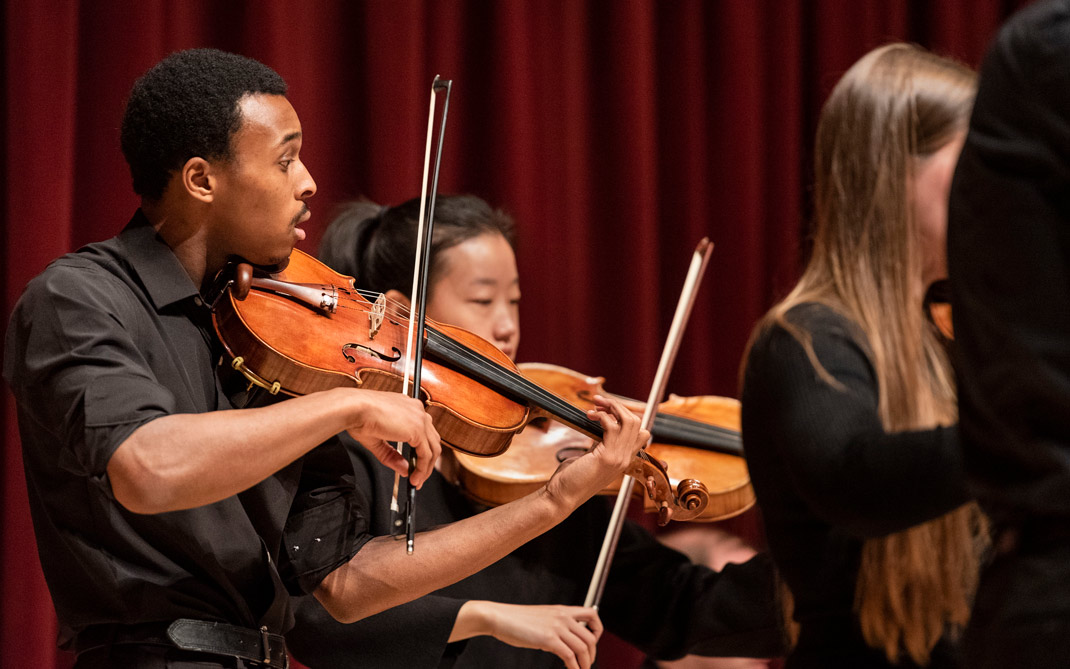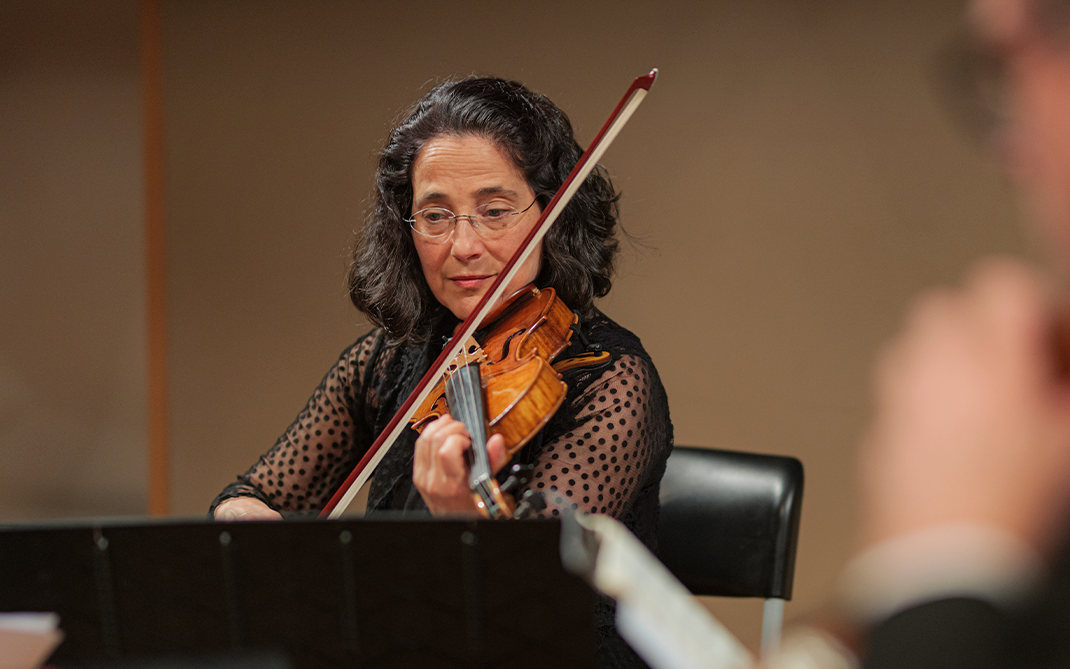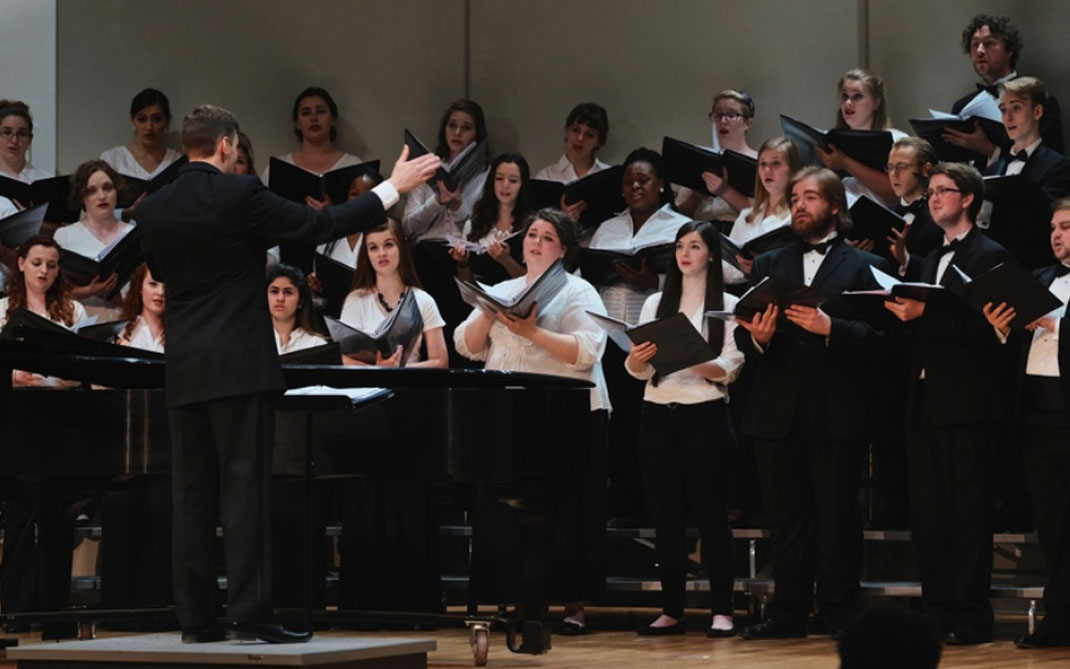Filmmaking BFA Annual Report
Filmmaking BFA Annual Report
The following Student Learning Objectives and assessment information is for Bachelor of Fine Arts undergraduate programs in the School of Filmmaking. Concentrations are offered in Animation, Cinematography, Directing, Picture Editing & Sound Design, Producing, Production Design & Visual Effects and Screenwriting.
Program Mission
The mission of the School of Filmmaking is to mentor and train our undergraduate students to become the voices of the future. We are committed to imparting the myriad skills that will enable our students to collaborate with leading storytellers across all audio-visual media, taking the ancient art of storytelling and merging it with the ever-changing landscape of new technologies.
Student Learning Objectives (SLOs)
SLO 1. Professional Readiness
By Spring Semester of their senior year, students will demonstrate a professional level of artistry (as defined by our discipline-specific assessment forms) in one or more of the disciplines in film, television, or web-based media.
Assessment Plans and Activities
Measure 1
Portfolio Assessment Forms
Measure 2
Capstone Course Evaluations
Evidence of Student Learning
As our Assessment Form template delineates, there are twelve criteria by which we gauge Professional Readiness. All Year 3 & 4 students in Cinematography, Directing, Picture Editing & Sound Design, Producing, and Screenwriting (our two-year disciplines) and all Year 2, 3, & 4 students in Animation and Production Design (our three-year disciplines) were assessed (in the classroom and in production) on a 4-point scale. The numbers that follow each professional readiness criterion listed below indicate the combined average scores of this student population:
- Organizational skills: 3.47
- Time management skills: 3.33
- Ability to meet deadlines: 3.38
- Ability to communicate clearly using industry terms: 3.57
- Commitment from development to delivery of project: 3.61
- Recognition of own limitations/knowing when to ask for help: 3.43
- Attitude and work ethic, honesty in dealing with peers, faculty and staff: 3.67
- Presentation of self and work: 3.54
- Demonstrated knowledge of workflow from development through post: 3.56
- Demonstrated respect for equipment and facilities: 3.74
- Ability to problem-solve: 3.55
- Demonstrated proficiency with equipment/software: 3.6
Overall average Professional Readiness score for this student population: 3.53
Further, responses from questions relevant to Professional Readiness on our Spring 2016 Capstone Course Evaluations data reveal the following averages (on a scale from 1 to 5, with 5 indicating “Strongly Agree”):
- Course fulfills the goals/learning outcomes as stated on the syllabus: 4.53
- My commitment to this subject has grown significantly as a result of this course: 4.54
- I have a greater command of the subject matter than I did before taking this course: 4.66
Interpretation
The Capstone Course Evaluation data reported above are strong, with an overall Professional
Readiness score of a 4.58 average on of our 5-point scale.
The results of the portfolio assessment data with regard to Professional Readiness also demonstrate to us that we are achieving this learning outcome. Areas of strength include our students’ commitment from development to delivery of project; attitude and work ethic, honesty in dealing with peers, faculty and staff; and demonstrated respect for equipment and facilities.
At the same time, we note that there is need of improvement for our students in the areas of time management and their ability to meet deadlines. These numbers are slightly lower than we’d like, although we note a slight increase between this year’s data and last year’s on these two Professional Readiness criteria:
AY 2014-2015
- Time management: 3.24
- Ability to meet deadlines: 3.33
AY 2015-2016
- Time management: 3.33
- Ability to meet deadlines: 3.38
Use of Student Learning Evidence
SLO 2. Effective Storytelling Skills
By Spring Semester of their senior year, students will demonstrate their ability to tell a compelling story through words, images, and sounds.
Assessment Plans and Activities
Measure 1
Portfolio Assessment Forms
Measure 2
Capstone Course Evaluations
Evidence of Student Learning
- Ability to create and recognize dimensional characters: 3.45
- Demonstrated understanding of character motivation: 3.45
- Ability to create/recognize dramatic tension: 3.51
- Ability to articulate storyline and theme: 3.42
- Ability to identify the turn of a scene: 3.44
- Ability to create/recognize the connection between story beats: 3.48
- Ability to pre-visualize intention: 3.48
- Originality of concept: 3.45
- Ability to apply technical skills towards aesthetic objectives: 3.46
Overall average Effective Storytelling score for this student population: 3.46
Further, responses from questions relevant to Effective Storytelling on our Spring 2016 Capstone Course Evaluations data reveal the following averages (on a scale from 1 to 5, with 5 indicating “Strongly Agree”):
- Course fulfills the goals/learning outcomes as stated on the syllabus: 4.53
- Includes assignments [that] enhance my understanding of the subject matter: 4.56
- Professor provides constructive verbal or written assessment of my creative work: 4.66
Interpretation
The Capstone Course Evaluation data reported above in Findings are strong, with an
overall Effective Storytelling Skills score of a 4.54 average on of our 5-point scale.
The results of the portfolio assessment data with regard to Effective Storytelling Skills also demonstrate to us that we are achieving this learning outcome. Areas of strength include our students’ ability to create and recognize dramatic tension, ability to create and recognize the connection between story beats, and ability to pre-visualize the intention of a scene or story.
At the same time, we note that there is need of improvement for our students in the skill areas of articulating storyline and theme, as well as the ability to identify the turn of a scene. These numbers are slightly lower than we’d like, although we see a slight increase between this year’s data and last year’s on the criterion of identifying the turn of a scene:
AY 2014-2015
- Ability to articulate storyline and theme: 3.44
- Ability to identify the turn of a scene: 3.33
AY 2015-2016
- Ability to articulate storyline and theme: 3.42
- Ability to identify the turn of a scene: 3.41
Use of Student Learning Evidence
In order to improve our students’ ability to better articulate storyline, theme, and the turn of a scene, starting in the Fall of 2016 the Dean, Assistant Deans, and Department Chairs of Producing, Directing, and Screenwriting will look at the various course syllabi within which story analysis is taught, and find ways to incorporate more practice in this skill-set across the curriculum. For example, for our required Year One “Fundamentals of Screenwriting” class, we will make sure that the faculty (who will all teach from the same syllabus) will includes exercises geared towards the students’ understanding of the basic tenets of story structure, theme, plot, character, conflict, etc.
For the Fall of 2017, then, we will make sure that our Screenwriting, Producing, and Directing faculty are all incorporating the same industry-standard terminology of storytelling in their classes, beginning with Year One, which will ensure that our students are communicating more effectively by fully understanding this shared vocabulary.
SLO 3. Creative Collaboration
By the end of Spring Semester of their senior year, students will demonstrate their effective collaboration with others (as team builders and leaders) at each phase of a project, from inception through completion.
Assessment Plans and Activities
Measure 1
Portfolio Assessment Forms
Measure 2
Capstone Course Evaluations
Evidence of Student Learning
As our Assessment Form template delineates, there are five criteria by which we gauge Creative Collaboration. All Year 3 & 4 students in Cinematography, Directing, Picture Editing & Sound Design, Producing, and Screenwriting (our two-year disciplines) and all Year 2, 3, & 4 students in Animation and Production Design (our three-year disciplines) were assessed (in the classroom and in production) on a 4-point scale. The numbers that follow each creative collaboration criterion listed below indicate the combined average scores of this student population:
- Participation/attitude in dealing with peers, faculty and staff: 3.67
- Constructive critique of others’ work: 3.54
- Ability to receive criticism and adjust accordingly: 3.55
- Ability to resolve conflicts in order to achieve creative intention: 3.48
- Ability to prioritize dept. needs w/in project's budgetary constraints: 3.61
Overall average Creative Collaboration score for this student population: 3.57
Further, responses from the question relevant to Creative Collaboration on our Spring 2016 Capstone Course Evaluations data reveal the following averages (on a scale from 1 to 5, with 5 indicating “Strongly Agree”):
- Enables greater understanding of collaborative relationships between departments on a film: 4.53
Interpretation
The Capstone Course Evaluation data reported above in Findings are strong, with an
overall Creative Collaboration Skills score of a 4.53 average on of our 5-point scale.
The results of the portfolio assessment data with regard to Creative Collaboration also demonstrate to us that we are achieving this learning outcome. Areas of strength include our students’ participation and attitude in dealing with their peers, faculty, and staff; and their ability to prioritize their department’s needs within the overall budgetary constraints of their film projects.
At the same time, we note that there is need of improvement for our students in the skill area of conflict resolution. A comparison between last year and this year on our creative collaboration criterion shows no appreciable change:
AY 2014-2015
- Ability to resolve conflicts within a department to achieve the creative intention: 3.47
AY 2015-2016
- Ability to resolve conflicts within a department to achieve the creative intention: 3.48
Use of Student Learning Evidence
SLO 4. Comprehension of Film History & Aesthetics
By the end of their senior year, students will demonstrate a broad-based knowledge of film history and aesthetics.
Assessment Plans and Activities
Measure 1
Subject Area Tests
Measure 2
Course Evaluations
Evidence of Student Learning
An integral component of the training of the “complete” filmmakers is the study of film history and aesthetics: an artist should be well-versed in one’s art. Towards that end, we require four Cinema Studies courses across Years One and Two of our program, regardless of the student’s eventual concentration. Students may take more Cinema Studies classes as electives over their remaining two years, if they wish. Subject matter ranges across standard expectations in the field; students are tested via essay exams and written papers, and assessed along a 4-point scale:
Year One (required Cinema Studies classes)
- Fall 2015: FIM 1301 (American Film History I): average score 3.38
- Spring 2016: FIM 1302 (American Film History II): average score 2.40
Year Two (required Cinema Studies classes)
- Fall 2015: FIM 2301 (Classics of World Cinema I): average score 3.10
- Spring 2016: FIM 2302 (Classics of World Cinema II): average score 3.34
Years Three & Four (sampling of elective Cinema Studies classes)
- Fall 2015: FIM 3761: Documentary Film: average score 3.7
- Spring 2016: FIM 3334: Realism & the Cinema: average score 3.2
Overall average score from testing data above: 3.19
Further, responses from questions relevant to comprehension of film history and aesthetics on Course Evaluations data from Spring 2016 reveal the following averages (on a scale from 1 to 5, with 5 indicating “Strongly Agree”):
- Course fulfills the goals/learning outcomes as stated on the syllabus: 4.61
- Includes assignments/readings/screenings that enhance my understanding of the subject matter: 4.64
- I have a greater command of the subject matter than I did before taking this course: 4.59
The overall average from the above course evaluation data: 4.61.
Interpretation
The Course Evaluation data reported above in Findings are strong, given the overall
Comprehension of Film History & Aesthetics score of a 4.61 average on of our 5-point
scale.
Further, the overall results of the data gleaned from the assessment measure of Subject Area Tests also meets our expectations: the overall average of 3.1 on our 4-point scale exceeds our benchmark of 2.7.
That said, we do note that the average test score for the Year One Spring Semester required Cinema Studies class in American film history is slightly lower than our benchmark, at 2.4. Last year’s average score for the same subject area test was 3.0.
Use of Student Learning Evidence





